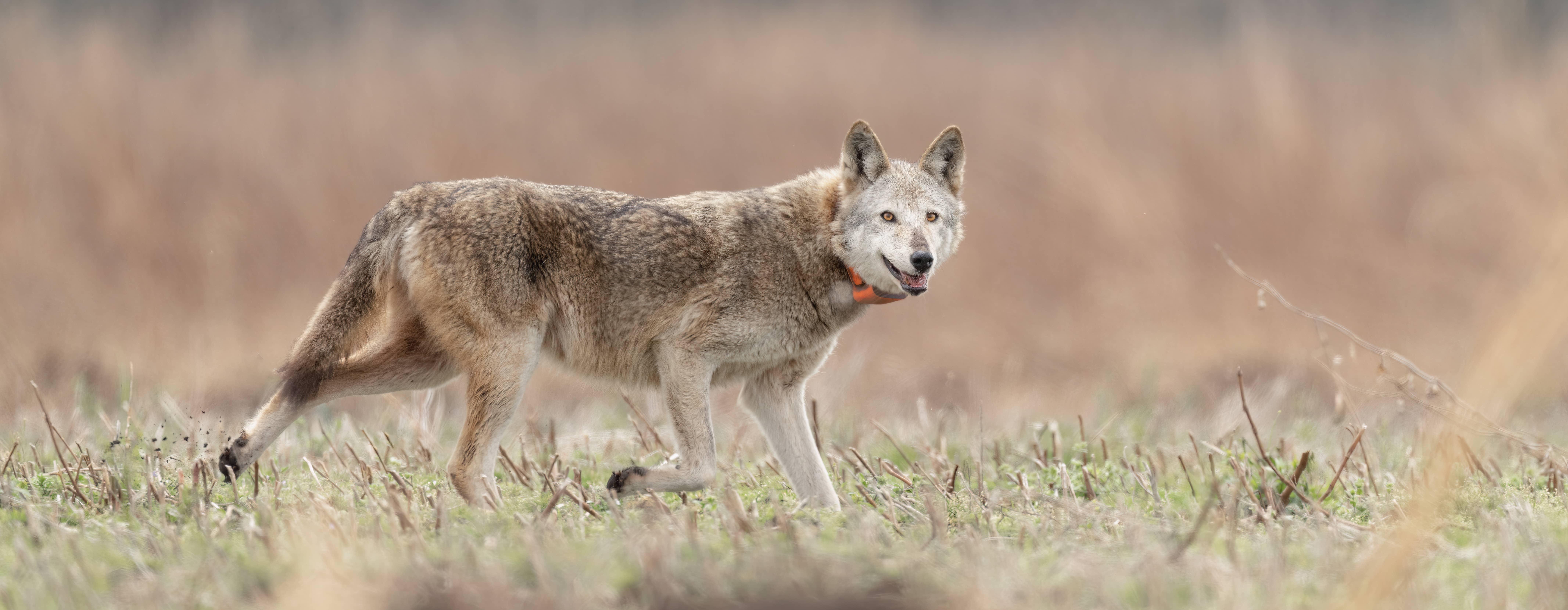North Carolina’s Vital Role in Saving the Red Wolf


They’re now six months old, and it appears the first litter of red wolf pups born into eastern North Carolina’s struggling population of wild red wolves is doing okay.
According to the U.S. Fish and Wildlife Services Red Wolf Recovery Program staff, six new pups, four females and two males, were born to a wild red wolf pair in the Alligator River National Wildlife refuge in April.
The proud parents of the new litter were brought together as part of the program’s work to encourage reproduction of red wolves in the wild.
And that’s just a portion of the North Carolina’s role in red wolf recovery.
The only two red wolves at Durham’s Museum of Life and Science are moving out to the Red Wolf Center in Columbia, North Carolina.
Eno and Ellerbe were born at the museum in April, 2018. The museum is part of the Species Survival Program, a national effort by zoos and nature centers to rebuild the population of critically endangered red wolves. 23 red wolf pups have been born at the museum.
“It’s time for the boys to move on to their next home,” Sherry Samuels, director of animal care at the museum, said in a news release. “All the red wolves in the recovery program are temporary residents at whatever zoo, museum, nature center, or facility in which they reside.”
The Red Wolf Center says red wolves used to be found in several locations throughout North America: from the Atlantic and Gulf coasts to the Ohio River Valley, parts of New England, southern Missouri and central Texas. They were considered a top predator in those areas. Red wolves generally live in pairs or in family packs, even though individual wolves are described as shy and elusive.
But as humans claimed more land for farms and towns, red wolves were driven out of most areas. Red wolves were declared extinct in the wild in 1980.
But not in human care.
The U.S. Fish and Wildlife Service gathered 14 of the remaining animals and started a breeding and release program with the help of the Association of Zoos and Aquariums. There are about 230 wolves spread amongst 49 U.S. Zoos and facilities
In North Carolina, the North Carolina Zoo in Asheboro, the Rowan Wild near Salisbury, the Western North Carolina Nature Center near Asheville and the Museum of Life and Science in Durham house and care for red wolves.
“I try to think of each wolf as a gift to those fortunate enough to see and meet it,” said Samuels. Each pup born at the museum and at other facilities in the state adds to the genetic diversity of the population. Two new red wolves will arrive at the Museum this fall.
The North Carolina State University College of Veterinary Medicine cares for wolves injured in the wild and as well injured at other facilities. The College also cares for a wolf pack of four wolves. Two other wolves were turned over to the Red Wolf Center last year.
“NC State is uniquely positioned to have a lot of involvement in this conservation aspect,” Tara Harrison, associate professor of zoo and exotic animal medicine at CVM, told Veterinary Medicine News. “We have all of the experts here. We not only provide expert medical care for the wild wolves and the zoo and museum wolves, but we’re also teaching future professionals how to carry on and do that work. We’re not only making a difference today, we’re making a difference in the future.”
The only wild population of red wolves is found in Eastern North Carolina. The USFWS says about 20 red wolves live in the Alligator River National Wildlife Refuge in East Lake, North Carolina.
Each summer, after the breeding and birthing season, representatives of the facilities in the red wolf program meet to look at the population, consider the needs of each facility and put wolf pairs together based on genetic diversity.
Because all the wolves in facilities descended from the original 14 animals collected by USFWS, putting wolf couples together to promote genetic diversity is vital to the program’s success.
“We also look at who has empty spaces and take into consideration a facility’s needs and wants,” Chris Lasher told VMS. Lasher is the animal management supervisor at the North Carolina Zoo, He coordinates the Red Wolf Special Survival Captive Breeding Plan. “We look at the needs of every partner and fill the needs for the species to make sure we are maintaining a genetically diverse insurance population under human care as a stop gap to keep the species from going extinct.”
